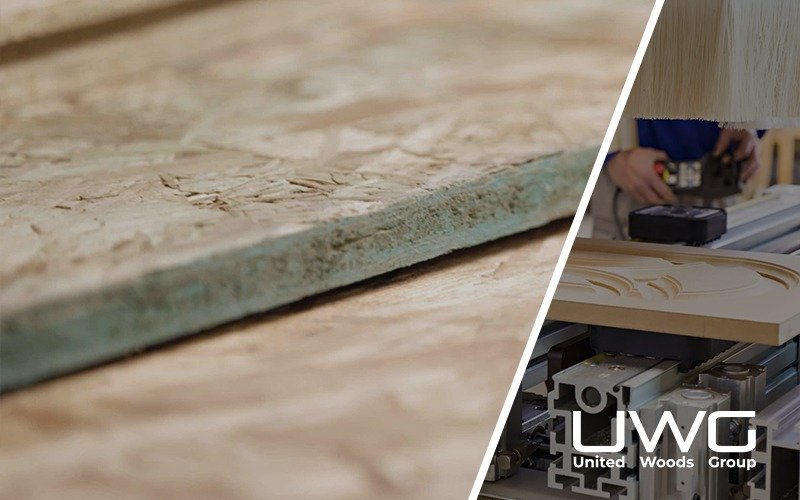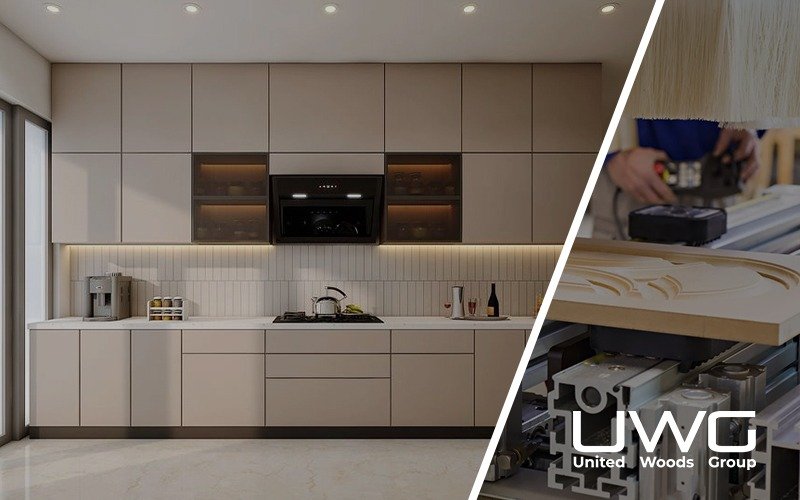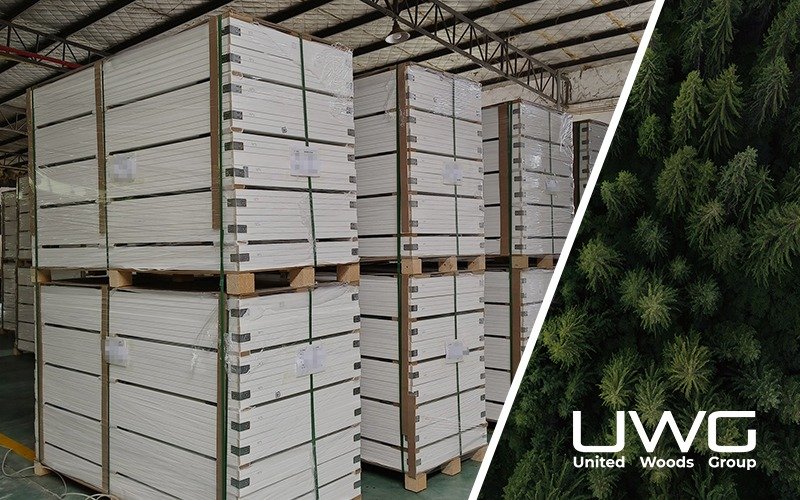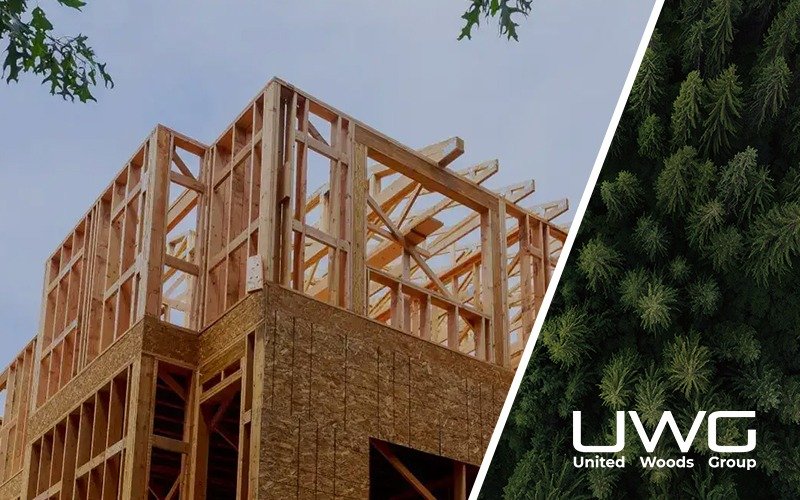PVC doors are popping up everywhere — from bathrooms and kitchens to office spaces and even modern homes. They promise durability, easy upkeep, and a price tag that doesn’t make your wallet wince. Whether you’re a builder looking for practical solutions or a buyer weighing options, this guide covers everything you need to know.
A PVC Painted-Free door is an interior door that utilizes PVC (Polyvinyl Chloride) film as its surface finish instead of traditional paint. This design eliminates the need for painting, offering a more eco-friendly, cost-effective, and health-conscious solution for modern spaces. The doors are constructed with a Honeycomb paper, MDF or solid wood core, laminated with a waterproof, scratch-resistant PVC layer that mimics wood grain, stone, or metallic finishes. This makes them ideal for high-moisture areas like bathrooms and kitchens, as well as high-traffic spaces such as schools or offices, where durability is critical. Their maintenance is effortless—stains wipe clean with water, and fading or chipping is virtually nonexistent.
Now that you know the basics, let’s take a closer look at what PVC doors are, their characteristics, and why they’ve become so popular among builders and buyers.
What is PVC paint-free door?
A PVC paint-free door is a type of interior door that does not require on-site painting. It is made by applying a PVC (polyvinyl chloride) film to the surface of a solid wood composite door or a molded door through vacuum thermoforming. The general production process is: solid wood as the basic frame, honeycomb paper, MDF, particle board, etc. as fillers, high-density boards on both sides of the door leaves, PVC film attached under high temperature and vacuum conditions, and the door frame is also treated with PVC veneer.
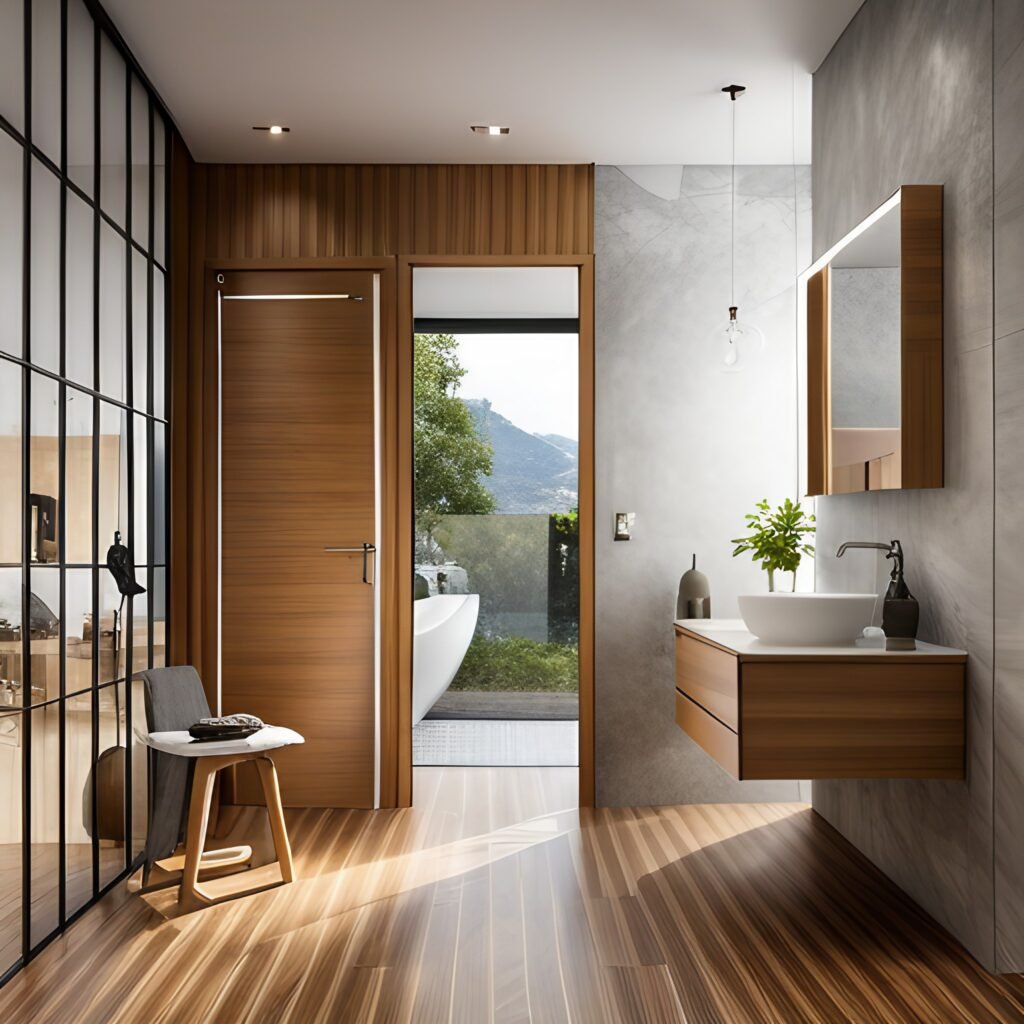
What are PVC paint-free door characteristics?
- Lightweight construction – Easier to transport and install compared to heavy wood or metal doors.
- Water resistance – Naturally repels water, making it ideal for wet areas.
- Smooth surface – Can be laminated, painted, or printed with woodgrain textures.
- Low maintenance – Requires only basic cleaning with mild soap and water.
- Variety of styles – Available in plain, panelled, sliding, or folding designs.
- Cost-effective – Often cheaper than hardwood or composite alternatives.
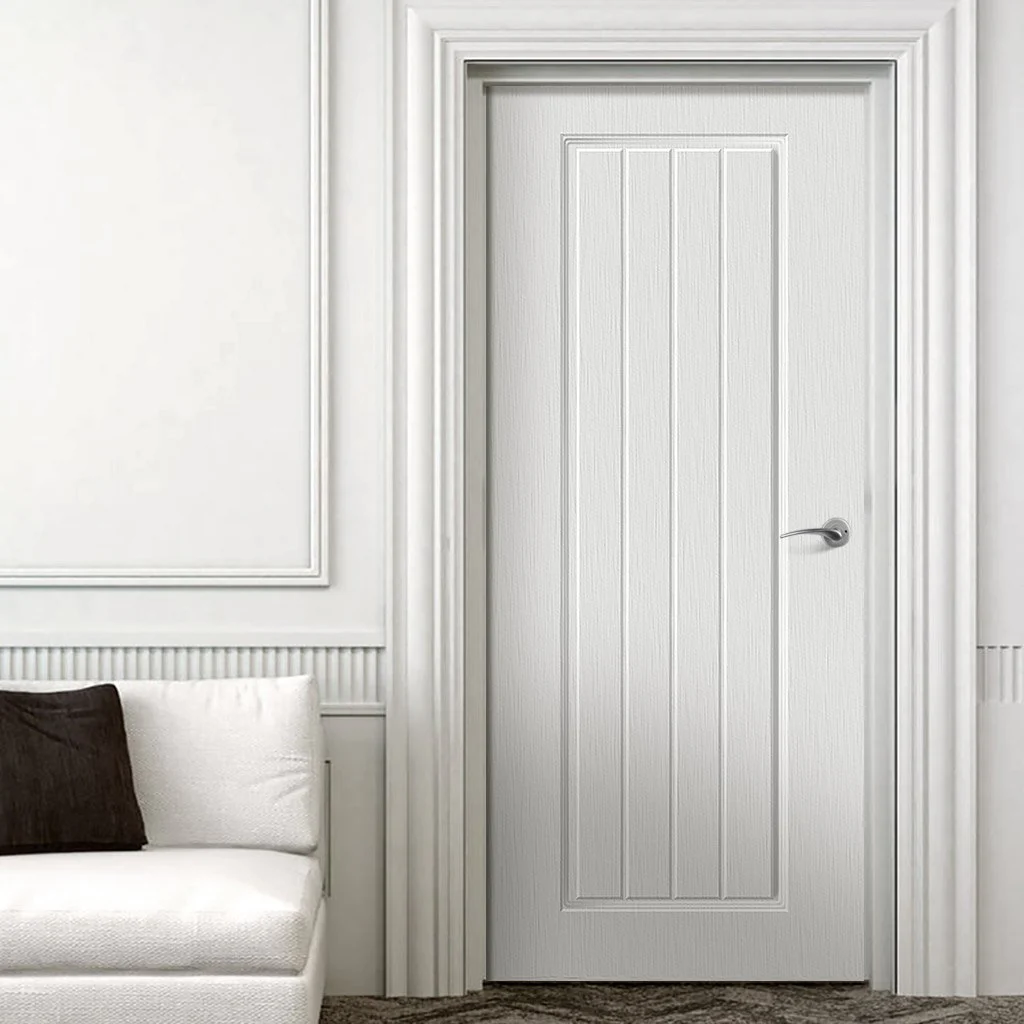
Advantages and disadvantages of PVC paint-free doors?
Advantages:
- Affordable – A PVC door price is typically far lower than hardwood or composite options.
- Moisture-proof – Won’t warp or swell in damp conditions.
- Low maintenance – No painting, sealing, or polishing required.
- Variety – Comes in multiple designs, colours, and textures.
- Easy installation – Lightweight material simplifies fitting.
Disadvantages:
- Less durable – Can dent or crack more easily under impact.
- Limited security – Not as strong as steel or solid-core wood doors.
- Heat sensitivity – May warp in extreme heat.
- Environmental concerns – Not as eco-friendly unless recycled.
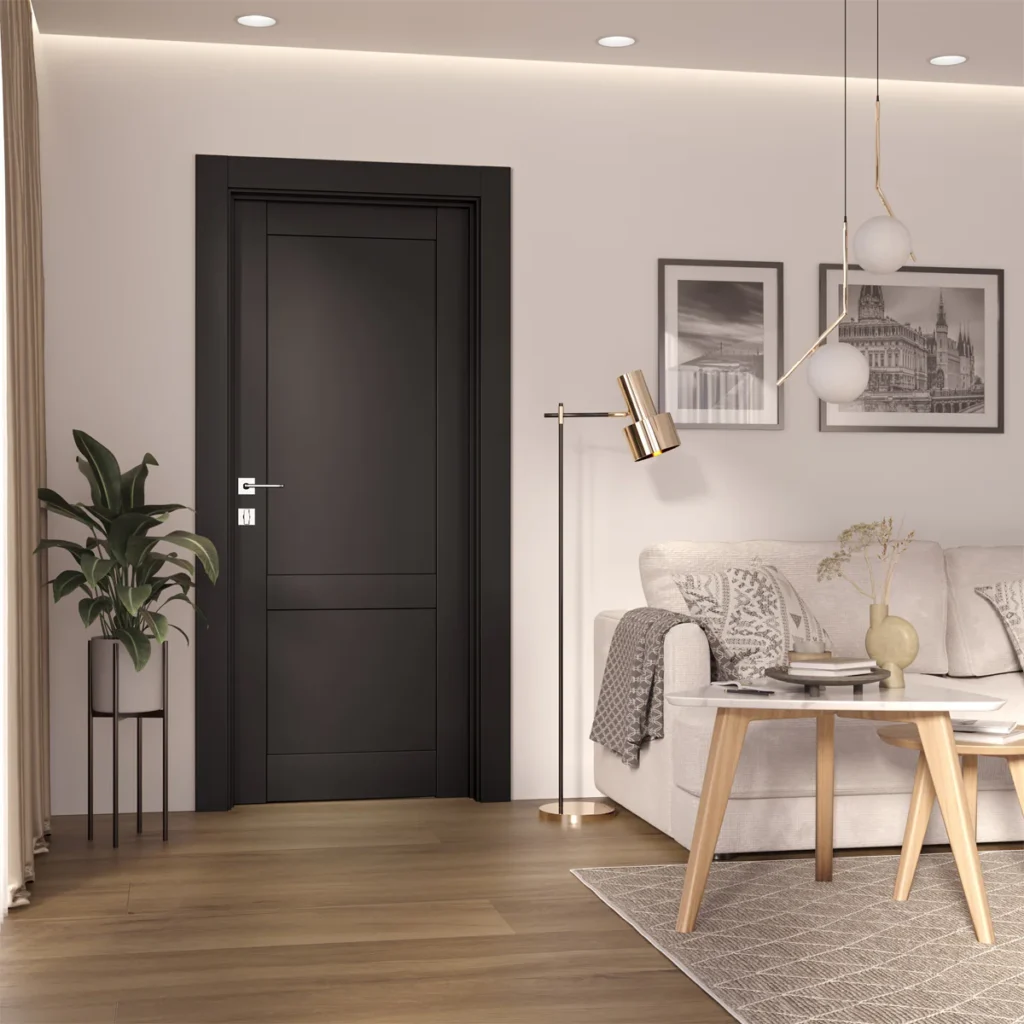
What are the uses of PVC paint-free doors?
- Bathrooms and toilets – Their water resistance makes them perfect for wet areas.
- Kitchens – Easy to clean and resistant to splashes.
- Laundry rooms – Can withstand humidity from dryers and washing machines.
- Commercial spaces – Used in low-traffic areas for cost savings.
- Temporary installations – Ideal for quick renovations or budget builds.

Best PVC paint-free door designs for homes
- Panelled designs – Classic style with multiple rectangular panels.
- Woodgrain finishes – Mimics oak, teak, or walnut for a warm look.
- Frosted glass inserts – Adds style while allowing light through.
- Sliding PVC doors – Space-saving solution for small rooms.
- PVC folding doors – Flexible option for closets or partitioning spaces. 图5

What is the lifespan of a PVC paint-free door?
With normal use and basic care, a PVC door can last 15 to 20 years. Factors that affect longevity include:
- Quality of manufacturing – Thicker panels and reinforced frames last longer.
- Installation – Poor fitting can cause premature wear.
- Environment – Harsh sunlight or extreme temperatures may reduce lifespan.
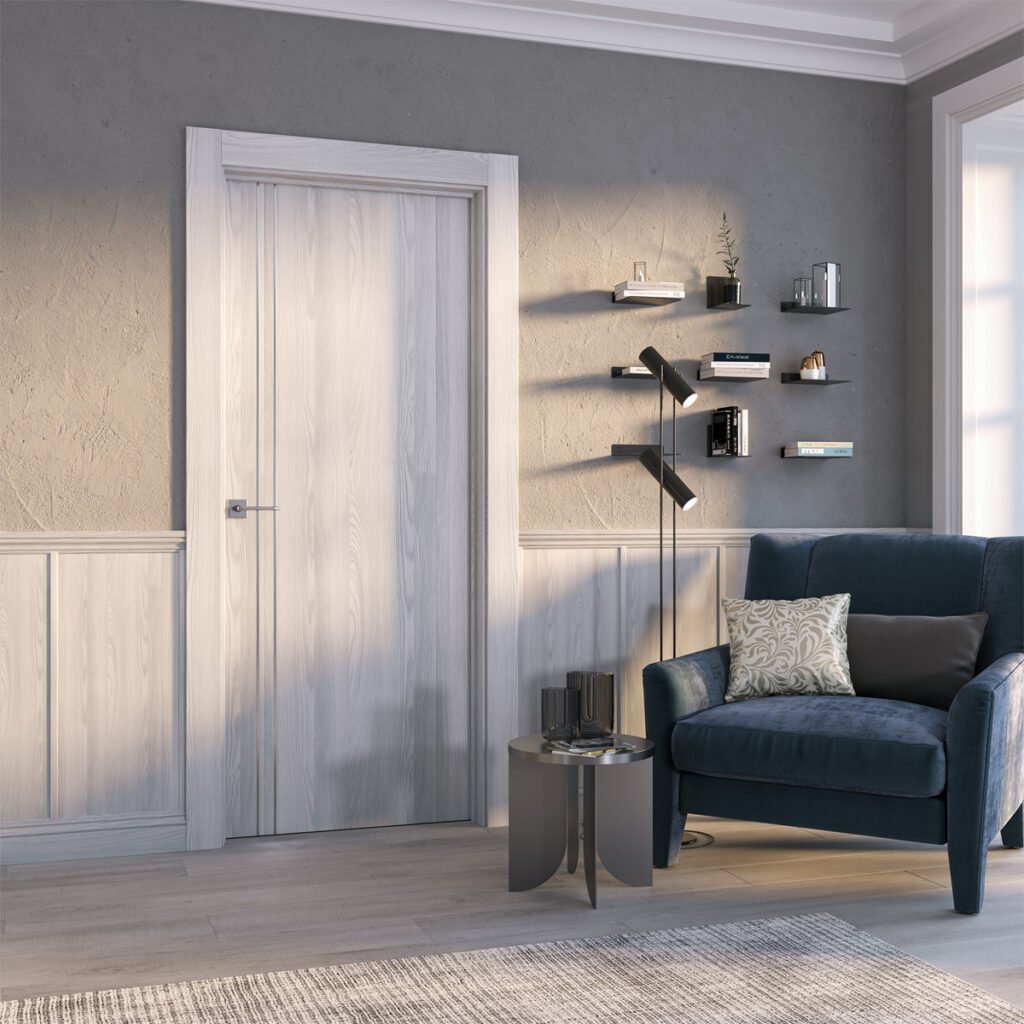
Maintenance tips for PVC paint-free doors
- Clean regularly – Use mild soap and water; avoid abrasive cleaners.
- Check hinges and locks – Tighten loose screws to prevent misalignment.
- Avoid heavy impacts – Prevent dents or cracks from sharp objects.
- Protect from direct heat – Keep away from prolonged sunlight exposure.
- Lubricate moving parts – Use silicone spray on hinges for smooth operation.

Common mistakes when buying PVC paint-free doors
With normal use and basic care, a PVC door can last 15 to 20 years. Factors that affect longevity include:
- Ignoring thickness and build quality – Thin panels may feel flimsy.
- Choosing the wrong type for the location – Not all PVC doors suit exterior use.
- Overlooking hardware quality – Cheap hinges and locks can fail early.
- Skipping professional installation – Poor fitting reduces performance.

Professional advice for builders
1. Match the door type to the location
- Bathrooms & Wet Areas: Choose fully sealed PVC models with anti-rust hinges.
- Kitchens: Opt for smooth, easy-to-clean finishes; avoid deep grooves where grease can accumulate.
- Bedrooms & Internal Spaces: Consider decorative panelled or woodgrain designs for a warmer look.
- Exterior Utility Areas: Use thicker panels with reinforced cores to resist outdoor temperature changes.
2. Prioritise quality over the cheapest price
While PVC doors are generally budget-friendly, extremely low-cost models often cut corners on thickness, hardware quality, and finish. Always:
- Check the panel thickness (at least 28–30 mm for durability).
- Inspect the laminate or paint quality to ensure it won’t peel.
- Test the hinges and locks for sturdiness.
3. Think about aesthetics early
PVC doors come in hundreds of colours, finishes, and designs — from sleek modern panels to rustic wood textures. Builders should present multiple design samples early in the project so buyers can match them to flooring, wall colours, and furniture.
4. Avoid common pitfalls
- Don’t use indoor-only PVC doors in exterior locations.
- Avoid direct contact with hot objects (heaters, stoves).
- Never drill large holes after installation, as it can compromise structural integrity.
Bottom line: Treat PVC doors as a purpose-specific, practical solution rather than a one-size-fits-all product. When chosen with care, they can be stylish, functional, and last well over a decade with minimal fuss.

Summary
PVC paint-free doors offer a smart balance between price, style, and practicality. When chosen wisely and maintained well, they can serve for decades — especially in humid environments. Whether you’re building or buying, understanding the pros and cons will ensure your investment lasts.Contact us and let us help you buy the right PVC door.



